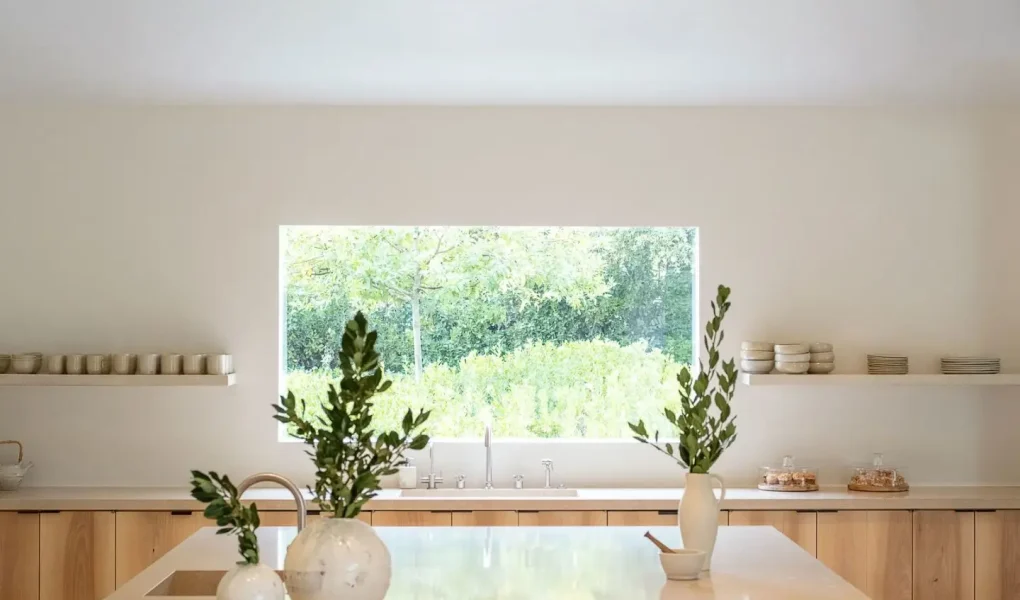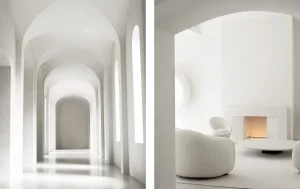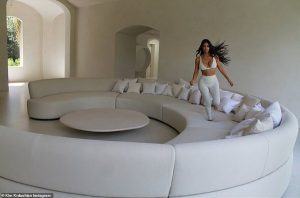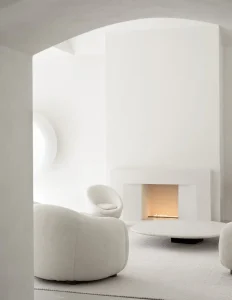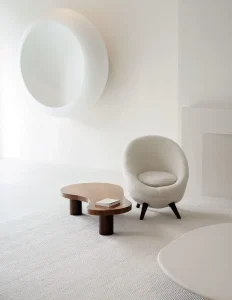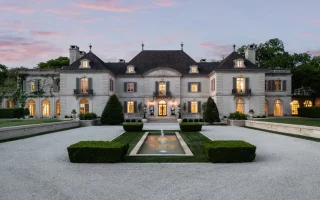Hidden behind the gates of California’s Hidden Hills, Kim Kardashian’s home is a design paradox: minimalist yet soulful, vast yet grounded, stark yet serene. What was once a suburban McMansion has been completely reimagined into what Kanye West once called a “futuristic Belgian monastery.” But beyond the headlines and social buzz, this home offers a compelling blueprint for those seeking calm, intentional living through design.
For homeowners looking to simplify, declutter, or create a more mindful space, Kim’s home is a case study in how design discipline can translate into emotional clarity. Here’s what makes her home more than just a celebrity sanctuary—and how you can apply the same principles, no matter the square footage.
Minimalism as a Way of Life
Step into Kim’s entryway and you won’t be greeted by gallery walls or vibrant furnishings. Instead, the space is hushed. Every surface is clean, every line purposeful. This isn’t minimalism as a trend—it’s minimalism as a mindset.
Belgian designer Axel Vervoordt, who led the transformation, prioritized scale, proportion, and material integrity over decoration. Rather than filling rooms with objects, the design allows space to breathe. According to designer Michele Pelafas, the emphasis lies in “the quality of the materials and the simplicity of the form.” The absence of clutter isn’t emptiness—it’s intention.
Homeowners can apply this by reevaluating what stays visible. Built-in cabinetry, concealed storage, and a curated selection of decor can turn even the busiest family room into a place of calm. And if you’re renovating, start with space planning before paint swatches—minimalism begins with layout.
A Monochromatic Palette That Flows
The entire home is washed in shades of creamy whites, chalky beiges, and sandy neutrals. There are no loud contrasts or bold patterns. Even the family’s cars are painted grey to match the tone of the interiors. It might sound extreme, but the result is visually meditative.
This monochromatic approach doesn’t mean flat or boring—it means texture takes the lead. Tactile materials like matte plaster walls, soft wool throws, and raw wood accents keep the space from feeling sterile. It’s a design that whispers, rather than shouts.
If you’re inspired by this look, consider starting small: repaint walls in a warm neutral, layer in fabrics in similar tones, and eliminate unnecessary color pops. Choosing the right color vinyl flooring—something like pale oak or bleached ash—can also ground the space in warmth while supporting a tonal design scheme.
Mindful Design and the Wabi-Sabi Influence
Image Create: Architectural Digest
At the heart of this home is a desire for stillness. Vervoordt’s approach is rooted in wabi-sabi, a Japanese philosophy that celebrates imperfection and transience. Architectural Digest describes the design as a “distillation”—a stripping back of the nonessential to reveal the purity of space.
Instead of flashy fixtures, you’ll find textured walls that feel handcrafted. Rooms aren’t filled—they’re framed, often around natural light or simple architectural elements like arched passageways or curved ceilings.
For UK homeowners, this can be a powerful lesson. Mindful design isn’t about cost—it’s about clarity. Choosing finishes that age gracefully, like limewashed walls or unlacquered brass, and building moments of visual pause—like an empty wall or a single sculptural chair—can help a home feel less chaotic and more grounded.
Layered Lighting as Atmosphere
In a home where every element is reduced to its essence, lighting becomes a key storyteller. Kim Kardashian’s home doesn’t rely on ornate chandeliers or dramatic fixtures. Instead, it embraces a layered lighting scheme—subtle, functional, and emotionally resonant.
Natural light is maximized through large windows, pale surfaces, and wide sightlines. Daylight flows uninterrupted through arched doorways and open corridors, creating a continuous sense of space and air. In the evenings, overhead lights are softened with recessed fixtures, while task lighting and sculptural table lamps create pockets of warmth.
There’s also a deliberate use of shadow and negative space—a hallmark of Vervoordt’s design philosophy. Rather than filling every corner with light, some are left in gentle shadow, giving the eye room to rest.
For homeowners looking to replicate this ambiance, think beyond a single ceiling light. Use a mix of floor lamps, wall sconces, and low-glow bulbs to build mood. Dimmer switches, warm-toned LEDs, and indirect uplighting can turn an ordinary room into a calming, meditative space.
Kid-Friendly Despite the Aesthetic
Despite its museum-like quality, Kim’s home isn’t off-limits to children. Architectural Digest notes that the design was tailored for a growing family, proving that minimalism and motherhood aren’t mutually exclusive.
The key is in how materials and spaces are chosen. Upholstery is plush and durable, rounded edges reduce visual clutter and prevent accidents, and open-plan layouts allow kids to move freely without obstacles. There’s a sense of functional flow—every element serves a purpose, and that purpose often includes comfort and ease.
For example, soft textures underfoot replace traditional rugs, and low built-in seating creates space for quiet moments. Nothing is overly precious, but everything feels intentional.
Parents can take inspiration from this by simplifying kid-friendly spaces—not by removing fun, but by reducing overstimulation. Replace bright plastics with neutral-toned storage bins, limit patterns to a single accent, and use cleanable flooring materials like vinyl plank that blend durability with design.
Final Reflections: A Home Designed for Peace
Kim Kardashian’s home is more than a design statement—it’s a reflection of intentional living. Every surface, fixture, and finish supports a lifestyle centered on calm, order, and clarity. And in today’s busy world, that’s a luxury far more valuable than marble or gold.
As someone who’s spent over a decade helping homeowners reimagine their spaces, I can say this: You don’t need celebrity-scale resources to build this kind of home. What matters is the mindset. Design with purpose. Remove what doesn’t serve. Highlight what brings peace.
Whether it’s choosing one cohesive palette, investing in layered lighting, or simply editing your shelves, the impact can be powerful. Kim’s house may be a minimalist masterpiece—but the real takeaway is universal: less can absolutely be more, especially when it’s done with heart.

